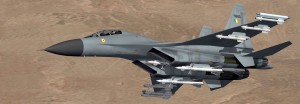In an attempt to streamline defence acquisition and give a boost to the “Make in India” initiative, the government on Monday approved changes to the Defence Procurement Procedure (DPP). This will give Indian private companies a chance to locally produce equipment and invest in research and development (R&D).
At a meeting chaired by Defence Minister Manohar Parrikar on Monday evening, the Defence Acquisition Council (DAC), which is the supreme decision-making body for the Ministry of Defence, allowed changes to the DPP after a one-year review, The Tribune said.
“Recommendations of the expert committee headed by former Home Secretary Dhirendra Singh were considered and most of them were approved,” Parrikar was quoted as saying by The Hindu.
As per the changes, the procurement policy of 2016 will have a new category — an Indigenously Designed, Developed and Manufactured (IDDM) platform. Under this category, if the design is indigenous, it will be mandatory to have 40% local content, but if the design is not local, 60% content will be mandatory.
Another major change to the DPP is “small and medium-scale industries will get opportunities,” Parrikar said. However, two issues have to be addressed: “The method of blacklisting for firms” and the “requirements for guidelines to select the correct strategic partner for producing equipment in India”. The DPP offsets limit has been increased from Rs 300 crore to Rs 2,000 crore, The Tribune report said.
“Issue of Offsets is actually irrelevant since this was not working in any case. As I have been saying all along, Offsets even for projects in excess if 2000 crores will be of no use from a defense technology point of view,” said G Raj Narayan, Founder & Md of Radel Group.
India is currently the largest buyer of military equipment and weaponary, which accounts for 15% of all international imports, Stockholm International Peace Research Institute, a Sweden-based think tank said.
The original article appeared on IBTimes.



